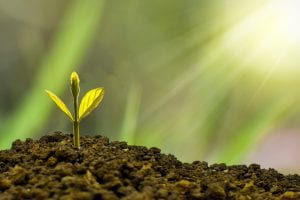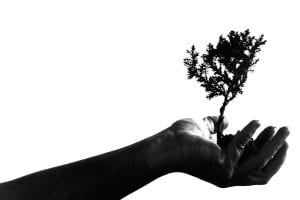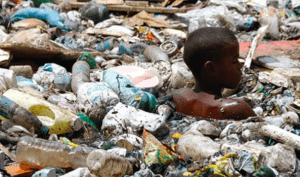
In previous posts, we have explored some of the ways in which women and the earth are connected. This week, we explore how the oppression of women and nature are inextricably linked. We’ll also look at how women have, and continue to advocate for the preservation of the Earth and its precious resources.
From the Gendered Impact videos (links below), we hear about the direct connection between the degradation of the earth and how it leads to the oppression and abuse of women within Indigenous communities. The videos discuss what happened to Indigenous communities where mines were established. The mines have detrimental effects on the environment and also on women. In the Land is Identity video, a woman shares how she is scared for her daughter. The mines have altered the landscape, the surrounding ecosystems, and the sacred connection to the land that Indigenous people once had. First Nations women are connected to nature, and when the land is harmed, it is said that they feel it in their body, mind, and soul. Through this connection, Indigenous women also are the advocates for the animals and other life forms that need their protection (KAIROS Canada). In the Violence Against the Land video we hear, “90% of women said that the mine had increased problems within the community” (KAIROS Canada, “2015 Gendered Impacts Series (5): Violence Against the Land (3:02)”). When there is an increase in revenue through newly created jobs, there is also an increase in drug and alcohol use, which then leads to an increase of domestic abuse against Indigenous women.

Another example that showcases how closely related the oppression of women and nature are is through the work of Wangari Maathai from Kenya. Maathai explains how women are responsible for tilling the earth, planting and tending crops, and harvesting the bounty to feed their families. With this, “they are the first to become aware of environmental damage that harms agricultural production: if the well goes dry, they are the ones concerned about finding new sources of water and those who must walk long distances to fetch it” (Cstraight Media – http://www.cstraight.com). Matthai is the founder of the Green Belt Movement, which began on Earth Day, 1977, and has now expanded to include over 30 countries across the globe. By encouraging women to plant “green belts” (to slow soil erosion, create shade, and produce a steady supply of lumber), she advocates for planting, harvesting, generating revenue, and creating community connections. Matthai is literally teaching women across the globe the important connection between women and the earth, and how to sustainably grow what is needed for survival.
In addition to this, Matthai intervened with the government wanted to erect the tallest building in Nairobi, in the center of a treasured public park. With her strong convictions and fearless leadership, the building was never built. Matthai was physically beaten and threatened with female genital mutilation in an attempt to help her “behave as a woman should.” This is a prime example of how the patriarchy exert their power and domination over both women and nature. In the coming years, Matthai organized and participated in more protests, generally yielding favorable results, and a high cost to her own safety. And yet, she continued on. The shares that she had the courage to continue these fights to save the earth, and the people that inhabit it, and does so without thinking of the terrible things that could happen to her as a result. When speaking about how she finds her courage, she says “At this particular moment, I am only seeing one thing—that I am moving in the right direction” (Cstraight Media – http://www.cstraight.com).
Both of these examples illustrate the innate connection that women have with nature. In understanding how sacred nature is and what is means to our survival, these women are able to share their knowledge, organize themselves to stand up to the patriarchal rule around them, and lead by example. Through their courage they not only preserve the world around them, like Matthai, they strengthen the knowledge and connections to the community around them. They work to empower women to stand up for themselves, their children, and their heritage.

Upon closer examination, we can see that the material deprivations and cultural losses of the marginalized and the poor are a result of disempowerment and environmental degradation. When one person or group has too much power, there is another person or group that is at risk of being oppressed. Ecofeminism: A Latin America Perspective offers that when speaking of ecofeminism, women in Latin America struggle to understand the concept as there is such a strong reliance upon the patriarchy and the church (Gebara, 93). This in turn creates a population of women who are marginalized as they suffer from the effects of both the patriarchy and capitalism (Gebara, 95). Gebara continues with the example of the daily cycle of hope, disappointment, fear, complacency, and exhaustion. Women send their children to school, rarely work outside of the home (which means they are reliant upon husbands/partners for any income), hope that their children come home having eaten, are heartbroken when they haven’t, and this day can be topped off by her husband/partner coming home with an abusive streak or wanting sex, which could add yet another child to this continuously broken cycle.

We see the detrimental effects of capitalism, especially in marginalized and poor countries in respect to trash. Trash is certainly a by-product of capitalism, and for those countries with no program to manage it, can be funnelled in heaps to slum neighborhoods. The article that references Recife, Brazil with a literal river of trash, and for some, the only way in which they can make a minuscule income. In wading through the trash, it is again, women and children who search for aluminum or metal to then sell (Corrêa).
The image above of a child in filthy river of trash is heart-wrenching on so many levels. None of us would ever hope for this for a child, be it our own or anyone else’s. There is no innocence for this child, and those who are marginalized as a direct result of patriarchal rule, capitalism without social responsibility, and the degradation and disrespect of nature. As we have previously looked at, the concept of intersectionality illustrates the many layers of identity that the people within these marginalized groups encompass. It’s not to say that the people who are so oppressed even know how to assess the different layers and labels, as they are clearly trying their best to survive on a daily basis. This problem is one that can benefit by being looked at by ecofeminism through a thoughtful and all-encompassing lens. We owe it to humanity and our earth to harness our insatiable demand for more and the right to assert power over other humans.
Corrêa, Talita. The Brazilian Slum Children Who Are Literally Swimming in Garbage. 30 Jan. 2014, www.vice.com/en/article/kwpwja/the-brazilian-slum-children-who-are-literally-swimming-in-garbage-0000197-v21n1.
Cstraight Media – http://www.cstraight.com. Speak Truth to Power | the Green Belt Movement. www.greenbeltmovement.org/wangari-maathai/key-speeches-and-articles/speak-truth-to-power.
Gebara, Ivone. “Ecofeminism: A Latin America Perspective.” Cross Currents, no. Spring 2003, 2003.
KAIROS Canada. “2015 Gendered Impacts Series (4): Land Is Identity (2:28).” YouTube, 14 Mar. 2016, www.youtube.com/watch?v=LopcPrSvDBw.
—. “2015 Gendered Impacts Series (5): Violence Against the Land (3:02).” YouTube, 21 Mar. 2016, www.youtube.com/watch?v=Mlbc2dD0gP0.

Dear Christine,
I enjoyed the way you connected the various readings in your blog post on this topic! I especially appreciated the manner in which you incorporated the readings on Recife, Brazil. I think you articulated this very emotional issue in a respectful and compassionate manner while also pointing to systemic causes that contribute to the perpetuation of this situation.
For me, the humanitarian and ecological crisis in the Recife canal stood out for its focus on the specific impacts of pollution on children. This is unquestionably an inhumane and intolerable situation. Yet, I was also uncomfortable with the way that this issue was portrayed both in Ivone Gebara’s essay and Talita Corrȇa’s newspaper article. Although Gebara writes about systemic poverty and oppression due to patriarchal systems of power, Gebara presents the issue in Recife on more individualistic terms. Addressing the central issue of pollution in the canal, Gebara wrote “They know that they are dirtying the canal but they have not tried other alternatives to the garbage, nor have the developed continuous behavior-they begin something today and tomorrow they are not able to follow their own good decisions” (2003, p. 96). To me, this implies the garbage problem in Recife is created by poor people who lack strength of character (perhaps due to poverty) to change individual behavior. Gebara genuinely shows compassion for these people, yet Gebara’s framing of the discussion also instills a sense of people in Recife reduced to victim status. This is not the way one would describe people with whom one was seeking to make an alliance or coalition with. It seems that Gebara’s perceived audience and potential allies are not those in Recife, and this approach feels paternalistic to me despite Gebara’s intentions.
I see a similar framing of the issues in Recife in Corrȇa’s writing. Standing out to me the most was the reported discussion Corrȇa had with the child, Larissa Silva. Corrȇa reports the interaction as “she asked me, ‘Do you think I like living here?’ I said no, and she responded, ‘But I do. It’s the only life I know’” (2014, para. 5). To me, Silva seems to be emphasizing that Corrȇea has false preconceptions about the lives of people in Recife. However, Corrȇa does not seem to use that interaction as impetus to find out more about this child’s actual life, needs, or desires. Instead, Corrȇa appears to retain her original assessment of life in Recife and uses Silva’s statement in a way that implies people in poverty are unable to know what is best for themselves.
The way an issue is framed is not just semantics, it is also a foundation for organizing resistance. Thus, I feel that it is essential to address crises such as those in Recife in a way that treats the people living in those situations as allies with agency, which is something I did not fully see in Gebara and Corrȇa’s work.
Corrȇa, T. (2014, Jan. 30). The Brazilian slum children who are literally swimming in garbage. Vice Media. https://www.vice.com/en/article/kwpwja/the-brazilian-slum-children-who-are-literally-swimming-in-garbage-0000197-v21n1
Gebara, I. (2003). “Ecofeminism: A Latin American Perspective.” Cross Currents.
Hi Christine,
The degradation of the environment and the abuse of women are interconnected, and this is clearly demonstrated by the Gendered Impact videos. These videos reveal how the establishment of mines in indigenous communities can lead to the deterioration of the environment and an increase in domestic abuse against women. I see it as another profound connection between women and nature that is often overlooked. As you pointed out, women are responsible for tilling the earth, planting and tending crops, and harvesting food to feed their families. They are the first to become aware of environmental damage that harms agricultural production, and when the land is harmed, Indigenous women feel it in their body, mind, and soul. Women, particularly Indigenous women, are the advocates for animals and other life forms that need protection.
It is disheartening how patriarchy and capitalism are responsible for the disempowerment and environmental degradation of marginalized and poor communities. In Latin America, Women are particularly affected by this as they suffer from the effects of both systems. The daily cycle of hope, disappointment, fear, complacency, and exhaustion that these women experience is heart-wrenching, and even more so is the fact that they must watch their children live and grow in misery. The image of Paulo Henrique in the trash-filled canal highlights the devastating consequences of various systemic issues that plague our society. His innocence has been stripped away by the harsh reality of living in a world that is not only patriarchal but also governed by capitalism without social responsibility.
Take for instance, Rio de Janeiro, my place of birth. A significant proportion of Rio’s population reside in “favelas”, communities informally known as slums. These areas are distinct from the more established and integrated neighborhoods in the city, as they lack the basic infrastructure and public services that are essential for a comfortable standard of living. The challenges faced by residents of favelas are often rooted in oppressive structures such as poverty, patriarchy, and systemic inequality. The lack of resources, access to basic services, and economic opportunities are all factors that contribute to the formation and perpetuation of these marginalized communities. The patriarchal systems in Brazil, which have historically favored the interests of men over women, have also contributed to the marginalization of women and their limited access to resources and opportunities.
However, despite these challenges, the residents of favelas have shown remarkable resilience and creativity in building and sustaining their communities. They are some of the most resourceful and innovative people in Rio de Janeiro; they have developed their own social and cultural systems, often in defiance of the dominant culture, and created their own forms of expression and art. Nevertheless, these communities are still vulnerable to violence and exploitation, particularly from gangs and criminal elements that seek to control their resources and exploit their residents.
The residents face a variety of problems, including poverty, high levels of crime and violence, and inadequate access to healthcare and education. Despite these challenges, favela residents demonstrate incredible ingenuity and resilience,
The presence of gangs and criminal elements in favelas is a reflection of the larger systemic issues of poverty and inequality that are rooted in patriarchy and other oppressive systems. In many cases, these gangs are composed of young men who have limited access to economic opportunities and who are drawn to the sense of power and control that gang life can offer. The violence that results from these dynamics further perpetuates the cycle of oppression and marginalization in favelas.
If you would like to learn more about Rio’s favelas, see link below.
https://youtu.be/c3BRTlHFpBU